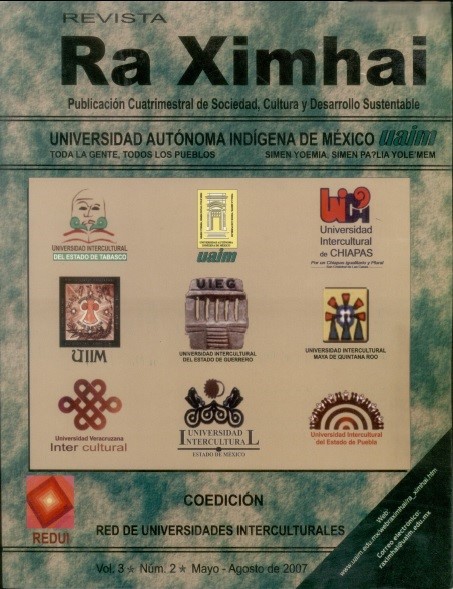Description and life cycle of the ash bug Tropidosteptes chapingoensis Carvalho & Rosas (Hemiptera: Miridae)
DOI:
https://doi.org/10.35197/rx.03.03.2007.01.jfKeywords:
Tropidosteptes chapingoensis, Chrysoperla sp, Erythmelus sp, ash bug, parasitoid, predatorAbstract
In Chapingo, Mexico, the life cycle of Tropidosteptes chapingoensis was studied in a temperature range of 20 to 27.5°C and under natural light conditions; said cycle requires an average of 53.3 days to complete. The species has five nymphal instars; the average length in mm for instars 1 to 5 is respectively: 0.91, 1.41, 1.95, 2.46 and 2.96. The average length of the female is 3.71 mm and that of the male is 3.52 mm (without measuring wings or antennae). Additionally, a morphometric comparison was made of two populations of ash bugs, one from Chapingo, Mexico and the other from Bogotá, Colombia; the latter was also identified as T. chapingoensis by Colombian specialists and it has been assumed that it entered that country from Mexico. The characters used for the comparison of the samples were: length of the rostrum, length of the posterior tibia, length of each of the four antennal segments and length and width of the head and pronotum. The characters that best differentiate these populations were: length of the posterior tibia, second antennal segment, third antennal segment and first antennal segment (in order from highest to lowest discriminating power). According to the results, it was concluded that both populations are distinct (a£0.05). The natural enemies of T. chapingoensis in Chapingo, Mexico were also studied; two genera of entomophagous insects were recognized, a predator of nymphs that was identified as Chrysoperla sp (Neuroptera:Chrysopidae) and an egg parasitoid identified as Erythmelus sp, (Hymenoptera:Mymaridae) which, being more specific, seems to have greater potential as a regulator of the bug population.
Downloads
References
Adams, P. A. 1979. A new species of Leucochrysa from México (Neuroptera:Chrysopidae). Folia Entomol. Mex. 41:95-101.
Álvarez Z. R. 1999. Bionomía del psílido del pirú Calophya rubra (Blanchard) (Homoptera:Psyllidae) sobre Schinus molle L. (Anacardiaceae). Tesis de Maestría en Ciencias. División de Ciencias Forestales. UACh. México. 122 p.
Balderas, L. R. y R. G. Charles J. 1978. Avance del censo de la fauna benéfica en la zona centro del Estado de Tamaulipas. En : XII Congreso Nacional de Entomología. Folia Entomológica Mexicana. 39-40:125-127.
Carvalho, J. C. M y A. F. Rosas. 1965. Mirideos Neotropicais, XCIV: Nova especie de
Tropidosteptes Uhler, do México (Hemiptera). Rev. Brasil. Biol. 25(2):187-189.
Cibrian T. D., R. Campos B., J. T. Mendez M. y J. Flores L. 1991. Diagnóstico Fitosanitario de las áreas arboladas del Paseo de la Reforma Cd. De México (Monumento a la Independencia – Glorieta de la Palma). D.D.F.–UACh. Pp. 40- 44.
Cibrián T. D., R. Campos B. , J. T. Méndez M., J. Flores L. y H. Yates III. 1995. Insectos Forestales de México. Pub. No. 6. UACh, SARH. USDA. Nat. Resources Canada. FAO. 453 p.
Dreistadt, S. H. 1994. Pests of Landscape Trees and Shrubs. An Integrated Pest Management Guide. University of California. Pub. 3359. 327 p.
Gutiérrez H. J. F. 1997. Inventario dasonómico urbano de los árboles del campus de la UACh. División de Ciencias Forestales. Tesis de Licenciatura. 105 p.
Johnson, R. A. y D. W. Wichern. 1992. Applied Multivariate Statistical Analysis. 3era.
Ed. Prentice hall, N.Y. 642 p.
Johnson, W. T. y H. H. Lyon. 1991. Insects that feed on trees and shrubs. 2a. Ed.
Cornell University Press. N. Y. U.S.A. pp. 402.
Keffer, S. L., S. J. Taylor y J. E. McPherson. 1994. Laboratory rearing and Descriptions of Immature Stages of Curicta scorpio (Heteroptera:Nepidae). Ann. Entomol. Soc. Am. 87(1):17-26.
Kelton, L. A. 1975. The Lygus bugs (genus Lygus Hahn) of North America (Heteroptera:Miridae). Mem. Entomol. Soc. Can. 95:7.
Mardia, K., J. Kent Y J. Bibby. 1989. Multivariate Analysis. Academic Press Limited.
England. 518 p.
Macgregor L. y O. Gutiérrez. 1983. Guía de insectos nocivos para la agricultura en México. Edit. Alambra Mexicana. S.A. p. 63.
Martínez G. L. y A. Chacalo. 1994. Los árboles de la Cd. de México. UAM. México. Pp 206-209.
Pinzon F. O. P. 1997. La chinche (Tropidosteptes chapingoensis Carvalho) del Urapán.
Sociedad Colombiana de Entomología. XXIV Congreso. Colombia. Pp. 220-224.
Powell, W., M. P. Walton y M. A. Jervis. 1997. Populations and communities. In: Insect Natural Enemies. Practical approaches to their study and evaluation. Edited by Mark Jervis and Neil Kidd. Edit. Chapman & Hall. Pp. 237-239.
––––SAS. 1988. User´s Guide, Relase. 6.03 Edition. NC, USA. 1028 p.
Sluss, T. P., H. M. Graham y E. S. Sluss. 1982. Morphometric, allozyme and hibridization comparisons of four Lygus species (Hemiptera: Miridae). Ann. Entomol. Soc. Am. 75(4): 448-456.
Usinger, R. L. 1945. Biology and control of ash plant bugs in California. J. Econom.
Entomol. 38:585-591.
Wheeler, A. G. Jr., B. R. Stinner y T. J. Henry. 1975. Biology and Nimphal Stages of Deraeocoris nebulosus (Hemiptera:Miridae), a Predator o Arthropod Pests on Ornamentals. Ann. Entomol. Soc. Am. 68(6):1063-1068.
Downloads
Published
How to Cite
Issue
Section
License
Copyright (c) 2007 Juana Fonseca González, David Cibrián Tovar, Antonio Villanueva Morales , José Refugio Lomelí Flores

This work is licensed under a Creative Commons Attribution-NonCommercial 4.0 International License.
Usted es libre de:
- Compartir — copiar y redistribuir el material en cualquier medio o formato
- Adaptar — remezclar, transformar y construir a partir del material
- La licenciante no puede revocar estas libertades en tanto usted siga los términos de la licencia
Bajo los siguientes términos:
- Atribución — Usted debe dar crédito de manera adecuada , brindar un enlace a la licencia, e indicar si se han realizado cambios . Puede hacerlo en cualquier forma razonable, pero no de forma tal que sugiera que usted o su uso tienen el apoyo de la licenciante.
- NoComercial — Usted no puede hacer uso del material con propósitos comerciales .
- No hay restricciones adicionales — No puede aplicar términos legales ni medidas tecnológicas que restrinjan legalmente a otras a hacer cualquier uso permitido por la licencia.








